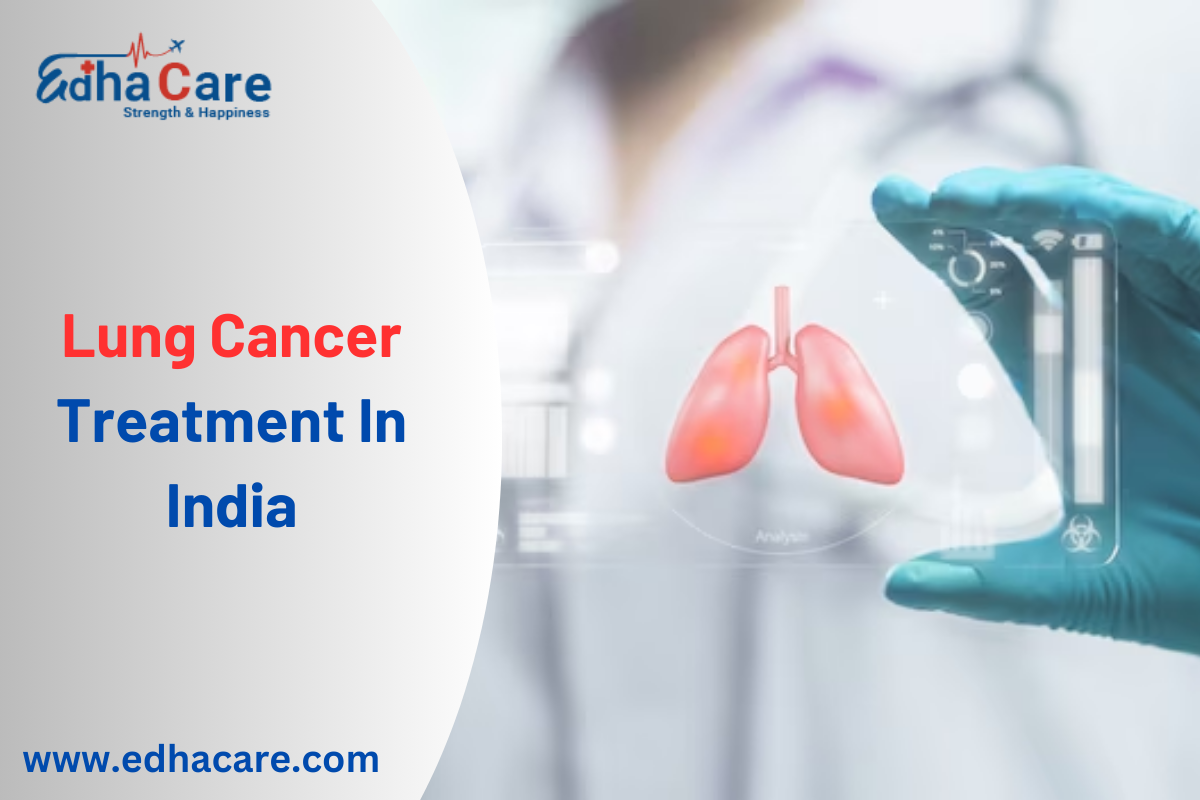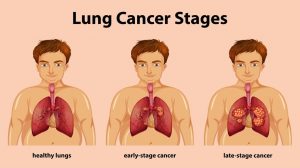Like all malignancies, lung cancer is brought on by an anomaly in the cell, the smallest unit of life in the body. This blog might be helpful for those who are looking for lung cancer treatment in India.
Cells only divide to create new cells when necessary because the body typically maintains a system of checks and balances on cell proliferation.
When this system of controls on cell growth is upset, cells begin to divide and proliferate out of control, eventually forming a mass known as a tumor.
Lung Cancer Symptoms
- Chest pain or discomfort
- A cough that doesn’t go away or gets worse over time
- Trouble breathing
- Wheezing
- Blood in sputum (mucus coughed up from the lungs)
- Hoarseness
- Loss of appetite
- Weight loss for no known reason
- Fatigue
- Trouble swallowing
- Swelling in the face and/or veins in the neck
[Also Read Myths and Facts About Cancer]
Stages of Lung Cancer
The size of the initial tumor, how deeply it penetrates the surrounding tissue, and whether it has migrated to the lymph nodes or other organs are the main factors used to stage cancer. There are specific staging recommendations for each form of cancer. Lung Cancer Treatment In India.
The cancer staging happens in three stages, namely TNM:
T : stands for your tumor’s size in the lungs.
N : stands for node involvement. This means if the cancer has involved the lymph nodes or not.
M : stands for metastasis. This determines if the cancer has spread across other vital organs or not yet.
Treatment For Lung Cancer – Lung Cancer Treatment In India
Surgery
Early-stage lung cancer can be treated with surgery. The type of surgery is determined by the size and location of the lung tumor, the severity of the malignancy, the patient’s overall health, and other considerations. A thoracotomy, or lengthy incision in the side of the chest, is used for several surgical procedures. Video-assisted thoracic surgery (VATS), which employs multiple small incisions (instead of one large one) and specialized long surgical instruments, may be used to treat some early-stage malignancies.
Segmental or wedge resection: Removal of only a small part of the lung
Lobectomy: Removal of an entire lobe of the lung
Pneumonectomy: Removal of an entire lung
Sleeve resection: Removal of a piece of bronchus, after which the lung is reattached to the remaining part of the bronchus
Radiotherapy
High-energy radiation is used in radiation therapy to destroy cancer cells and reduce tumor size. Chemotherapy and radiation therapy can both be used to treat Lung Cancer Treatment In India. Radiation therapy is administered using the following methods.
Chemotherapy
Chemotherapy scans the entire body for tumor cells, unlike surgery and radiation therapy, which target a single part of the body. Most of the time, chemotherapy is administered via IV infusion. Chemotherapy works by preventing the cancer cells from proliferating or growing. Different medication classes combat cancer cells in various ways.
Each patient will receive a treatment plan recommendation from the doctor. For Lung Cancer Treatment In India, chemotherapy may be administered either alone or in combination with other treatments.
[Also Read World Lung Cancer Day]
Benefits for Lung Cancer Treatment In India
As India is growing towards development it also shows that the Indian medical industry is also advanced with the latest technology in their treatment. Patients around the world are now looking towards Lung Cancer Treatment In India for their lung cancer treatment. There are many benefits that patients can avail by getting their Lung Cancer Treatment In India.
Affordable Treatment:
Patients can save up to 60% when choosing cancer treatment in India. The cost of treatment in India is insured by multiple sources, which makes it easy for foreign nationals.
High-Quality Treatment:
The Indian government has worked very hard to guarantee that medical services are of the highest caliber. It has established the National Accreditation Board for Hospitals and Healthcare Providers (NABH) as a national accrediting body. The highest international certification and accreditation criteria are guaranteed by this organization.
Nil Waiting Period:
The best medical tourism company in India has a good network and therefore does not let foreign patients wait for treatment for long. The patients can avail of direct appointments with doctors and the best hospitals in India.
Experienced Doctors:
The medical tourism company had tie-ups with renowned oncologists or cancer doctors in India. The specialists have been practicing for many years and therefore make it easy for many patients to get quality and affordable treatment.
[Also Read Best Oncologists in India]
Lung Cancer Treatment In India
Patients should get the diagnosis and get the right treatment at the right time is very important, if they are looking for Lung Cancer Treatment In India. The anxiety of cancer patients and their families is understandable, and to help them make the right choice, EdhaCare is there to assist you.
We are known as the best medical tourism company in India as we have tie-ups with top cancer hospitals and doctors all across India.
Our teams have spread throughout with a strong network of people who are diligently involved in assisting patients right from visa, ticketing, consultation, treatment, etc.
India is the first choice among patients, globally, who are looking for affordable, qualitative cancer treatment.
Book Your Health Appointment With Our Experts – Click To Book Appointment


